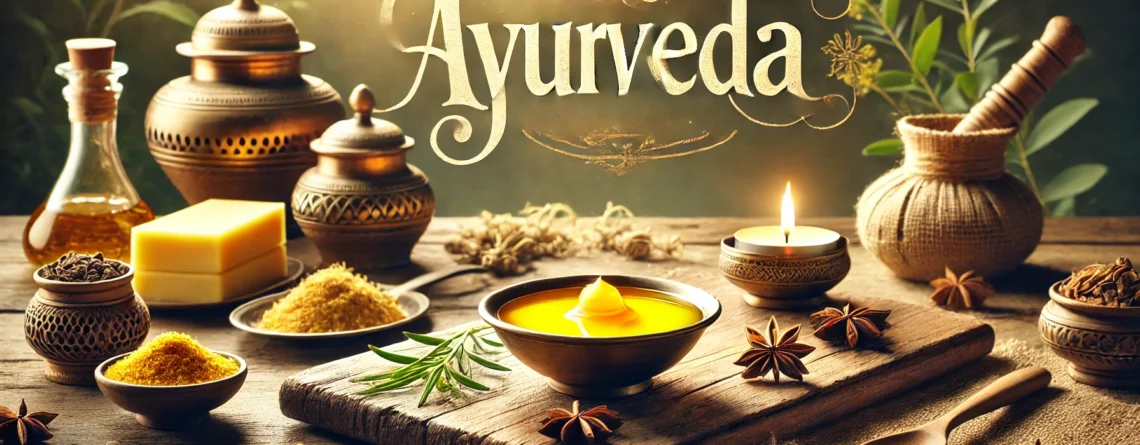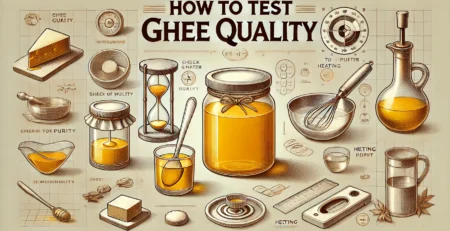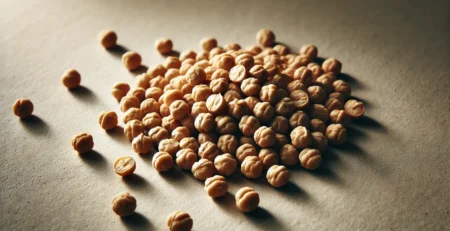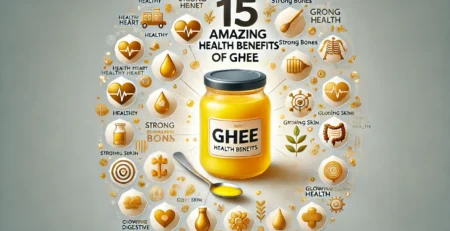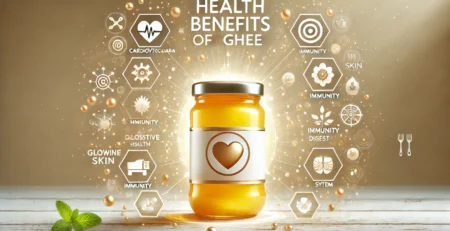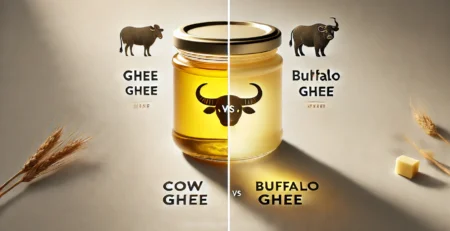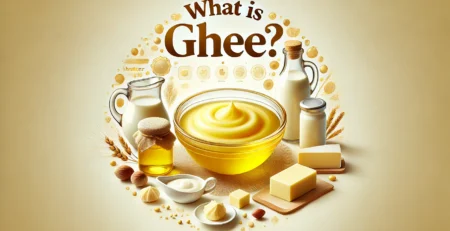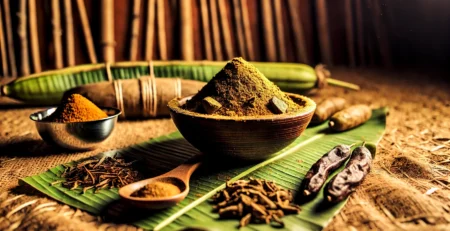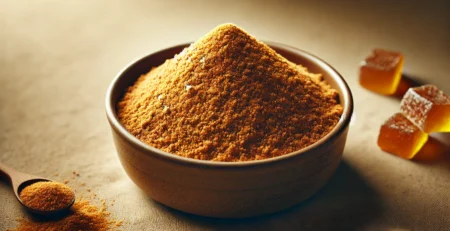Ghee In Ayurvedic
Ghee in Ayurveda
Discover the timeless wisdom of Ghee in Ayurveda – a cornerstone of health and healing.
Ghee, or clarified butter, has been cherished in Indian culture for centuries, particularly within the realm of Ayurveda. Often referred to as “liquid gold,” ghee is much more than a cooking ingredient; it is a powerful therapeutic agent used for various purposes, ranging from enhancing digestion to rejuvenating the skin and body. This article explores the deep-rooted significance of ghee in Ayurveda, its qualities, healing properties, and diverse applications.
Ghee – An Ayurvedic Perspective
According to Ayurveda, ghee is the most refined essence of milk, itself considered the sap of all plants. Ingesting ghee is akin to fueling the body’s digestive fire, known as Agni, which is central to overall health. Ghee is believed to build the body’s internal juices, or Rasa, which are essential for vitality and immunity. These internal juices are vital in maintaining youthfulness and are gradually depleted with age.
Ghee is also revered for its ability to nourish the mind, enhancing Dhi (intelligence), Buddhi (intellect), and Smrti (memory). Importantly, while ghee stimulates Agni, it does so without aggravating Pitta, the fire element in the body. Instead, it cools and balances the body, a critical function in today’s fast-paced, heat-inducing world.
The Role of Ghee in Cleansing and Detoxification
Ghee is central to Ayurvedic cleansing practices like Panchakarma, where it is used to penetrate and dissolve toxins (Ama) accumulated in the tissues. Once dissolved, these toxins are expelled from the body through the digestive tract. Interestingly, the healing properties of ghee are said to improve with age, with some families in India passing down aged ghee as a medicinal legacy. In fact, 100-year-old ghee is highly prized for its exceptional healing qualities.
Qualities of Ghee
Ghee is known for its longevity-enhancing properties. It counteracts the qualities of Vata dosha, which are synonymous with aging, by providing the opposite attributes—heaviness, oiliness, and softness. These qualities help to slow down the aging process, making ghee an essential part of a balanced diet and lifestyle.
Ghee is also credited with making the voice soft and melodious due to its unctuous nature. It increases Kapha, which is the energy that forms the body’s structure, while it decreases Pitta and Vata, the doshas associated with fire and air elements, respectively. In Ayurvedic treatments like Panchakarma, ghee is used externally, particularly in eye treatments like Netra Basti, where warm ghee is applied to soothe and nourish the eyes, leaving them feeling relaxed and rejuvenated.
Healing Properties of Ghee
Ghee’s healing properties have been recognized for millennia. In ancient India, wells full of ghee were reserved for those suffering from wounds, as ghee is known for its Ropana, or healing, qualities. It is effective in treating a range of conditions, from peptic ulcers and gastritis to bedsores and skin rashes.
In Ayurveda, ghee is also applied to burns, whether caused by fire or chemicals, to speed up healing and reduce scarring. The effectiveness of ghee in promoting skin healing is well-documented. A remarkable case involves a yoga instructor who suffered second and third-degree burns from a pressure cooker explosion. By applying ghee twice daily, he fully recovered without scarring, despite being told by doctors that scars were inevitable.
However, it’s worth noting that while ghee is beneficial, it should be used sparingly by individuals with obesity or high levels of ama (toxins) in their bodies. Ghee is not just beneficial for the skin; it also enhances the overall strength, luster, and beauty of the body.
Ghee in Daily Life and Rituals
1. Body Massage (Abhyanga)
Abhyanga, the practice of massaging the body with ghee, bypasses the digestive system and allows the nourishing qualities of ghee to penetrate deep into the tissues. Ayurvedic texts suggest that 60% of what is applied to the skin is absorbed into the body, effectively “feeding” the skin and tissues. Regular Abhyanga with ghee is believed to slow the aging process, enhance immunity, and provide a profound sense of well-being.
2. Purvakarma (Pre-Panchakarma)
Ghee is also used in Purvakarma, a preparatory stage of Panchakarma, where it is consumed in small amounts to oleate the internal organs and dissolve toxins in the tissues. This allows the toxins to be carried to the digestive tract for elimination.
3. Carrier for Herbs and Medicines
Ghee’s supreme penetrating qualities make it an excellent carrier (yogavahi) for herbs and medicines, enabling these substances to reach deep into the body’s tissues.
4. Digestive Aid
A teaspoon or two of ghee taken first thing in the morning, followed by hot water, can stimulate bowel movements and warm the body. A couple of spoonfuls in warm milk before bedtime can soothe the nerves, lubricate the intestines, and ensure a smooth bowel movement in the morning.
5. Culinary Uses
Ghee is excellent for cooking, especially for sautéing or stir-frying, due to its high flash point. In India, it is said that no meal is complete without the use of ghee, as it enhances the flavor and digestibility of food.
6. Oral Health
Ghee can be used as a mouthwash (gandush) to improve the health of teeth and gums, promoting overall oral hygiene.
7. Bath Oil
Adding a couple of tablespoons of ghee, mixed with essential oils, to a warm bath can moisturize and soften the skin, leaving it nourished and glowing.
8. Healing Burns and Wounds
Ghee is highly effective in treating burns and wounds. It can also be used in the eyes to alleviate tiredness and fatigue, offering immediate relief.
9. Facial Moisturizer
Ghee makes an exquisite facial moisturizer, deeply hydrating the skin and leaving it supple and radiant.
10. Relief for Nosebleeds and Headaches
In Ayurveda, a few drops of ghee applied in the nostrils can help stop nosebleeds and, when used twice daily, can relieve headaches.
Ghee and Modern Science
Modern scientific research supports many of the traditional uses of ghee in Ayurveda. Ghee is rich in butyric acid, a short-chain fatty acid known for its anti-inflammatory properties. It also contains omega-3 and omega-9 fatty acids, which are beneficial for heart health. The vitamins A, D, E, and K found in ghee are essential for maintaining healthy skin, eyes, and bones.
Furthermore, ghee’s ability to support digestion and metabolism is increasingly recognized in the field of nutrition. Its high smoke point makes it an ideal cooking fat, as it does not produce harmful free radicals when heated, unlike many other oils.
Ghee and Spiritual Practices
In addition to its physical benefits, ghee holds a sacred place in spiritual practices. It is commonly used in yajnas (sacrificial rituals) and as a fuel for oil lamps in temples and homes, symbolizing purity, nourishment, and the sustenance of life.
In meditation and yoga, ghee is considered to enhance mental clarity and focus. It is believed to support the subtle energies in the body, facilitating spiritual growth and higher states of consciousness.
Conclusion: Embracing Ghee in Ayurveda
Ghee in Ayurveda is more than just a food; it is a potent healing substance with a multitude of applications, from promoting longevity and vitality to enhancing spiritual practices. Whether used internally or externally, ghee offers a natural, holistic approach to health and wellness. By incorporating ghee into your daily routine, you can experience the profound benefits that this ancient remedy has to offer, supporting not just the body, but the mind and spirit as well.


